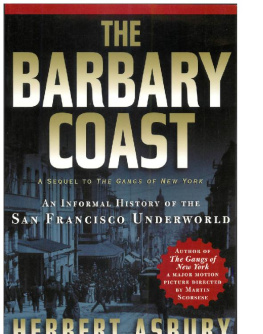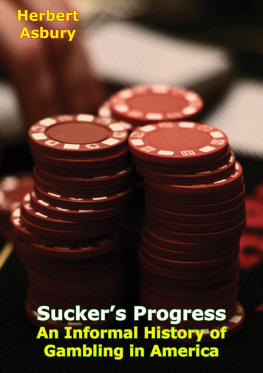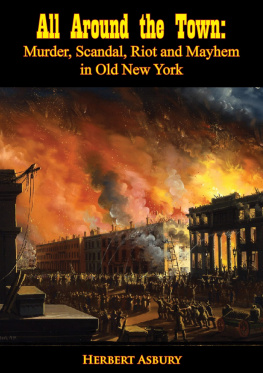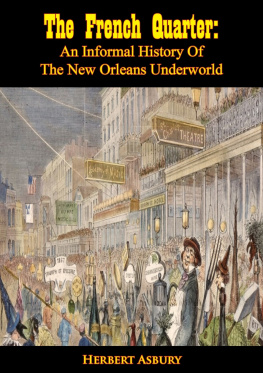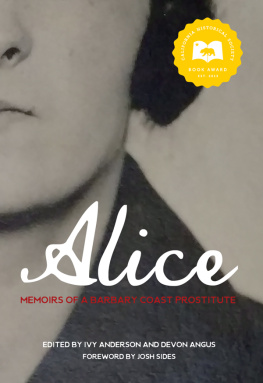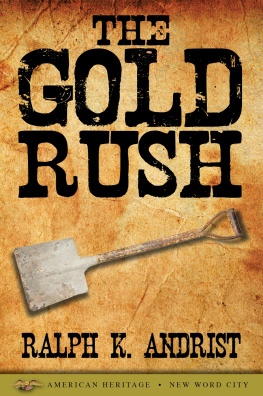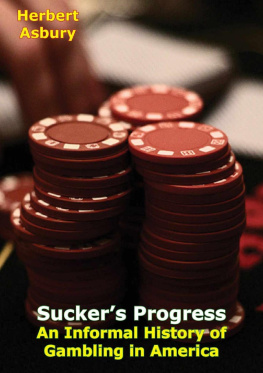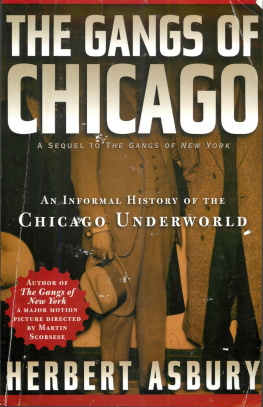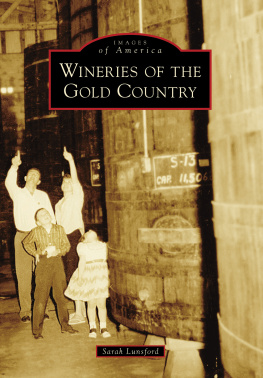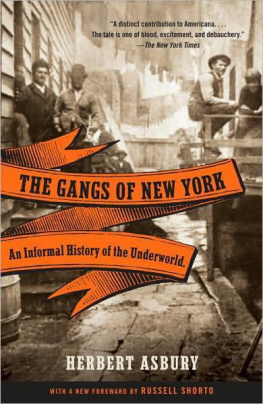Sometimes the mistresses of the large harlotry establishments presided at elaborate social affairs to which they invited the most important men of the town. They cannily succeeded in combining pleasure with profit by introducing new girls to their guests, by presenting old favorites in new exhibitions, and by charging outrageous prices for liquor served during the function. Occasionally, however, these gatherings were almost painfully respectable. One such is thus described in The Annals of San Francisco:
See yonder house. Its curtains are of the purest white lace embroidered, and crimson damask. Go in. All the fixtures are of a keeping, most expensive, most voluptuous, most gorgeous. It is a soire night. The 4 lady of the establishment has sent most polite invitations, got up on the finest and most beautifully embossed note paper, to all the principal gentlemen of the city, including collector of the port, mayor, aldermen, judges of the county, and members of the legislature. A splendid band of music is in attendance. Away over the Turkey or Brussels carpet whirls the politician with some sparkling beauty, as fair as frail; and the judge joins in and enjoys the dance in company with the beautiful but lost beings, whom to-morrow, he may send to the house of correction. Everything is conducted with the utmost propriety. Not an unbecoming word is heard, not an objectionable action seen. The girls are on their good behavior, and are proud once more to move and act and appear as ladies. Did you not know, you would not suspect that you were in one of those dreadful places so vividly described by Solomon . But the dance is over ; now for the supper table. Every thing within the bounds of the market and the skill of the cook and confectioner, is before you. Opposite and by your side, that which nor cook nor confectioners skill have made what they are cheeks where the ravages of dissipation have been skilfully hidden, and eyes with pristine brilliancy undimmed, or even heightened by the spirit of the recent champagne. And here the illusion fades. The champagne alone is paid for. The soiree has cost the mistress one thousand dollars, and at the supper and during the night she sells twelve dozen of champagne at ten dollars a bottle No loafers present, but the male ton; vice hides itself for the occasion, and staid dignity bends from its position to twine a few flowers of social pleasure around the heads and hearts of these poor outcasts of society.
Curiously enough, the first important outbreak of criminal violence in San Francisco did not originate in the vice-ridden areas around Clarks Point and on the slopes of Telegraph Hill, nor was it instigated by the wretched Chilenos who dwelt there in the utmost misery and degradation. On the contrary, it was to a very large extent directed against them, and the decent citizens of the town were driven into the paradoxical position of defending a colony of depraved women against the attacks of an organization of vicious men. Moreover, it was part and parcel of the systematic and heartless persecution of the Spanish-American which began in the gold-fields, soon extended to the towns and cities, and remains one of the blackest pages of Californias history. The miners, particularly those from other parts of the United States, harassed the poor greaser in every conceivable manner, stealing and destroying his goods and mining equipment, driving him from his claims and farms, raping his women, beating his children, flogging or killing him on little or no provocation, and hanging him with elaborate pretensions to justice if he so much as attempted to defend himself or failed promptly to vacate property which an American desired. In one of the most celebrated of many such examples of brutality the miners at Downieville lynched a young Mexican woman, mistress of a gambler, for stabbing to death an American miner who had broken into her cabin during the absence of her lover and assaulted her. When the mob seized her, there was a great roar of Give her a fair trial and hang her! which aptly expressed the sentiment that prevailed throughout California. A physician who testified that the girl was pregnant and therefore in no condition to be hanged was compelled to leave the district. Another man who tried to interfere with the lynching was dragged bodily from the platform of the scaffold and literally kicked out of the town. The miners arranged themselves in two lines and buffeted him as he ran the gantlet.
The immediate cause of the ill treatment of Spanish-Americans was probably anger and jealousy over the fact that they, being first on the ground, had naturally occupied the richest diggings. But much of it was doubtless due to the widespread and pernicious influence of the Know-Nothing or Native American party, which had already won municipal elections in Boston and New York and was waging a strong campaign for control of the national government, on a platform that was violently anti-foreign and anti-Catholic. Also, many prominent American politicians and office-holders frequently berated all foreigners as trespassers upon the public domain, and demanded their expulsion. Among them was General Persifer F. Smith of the United States Army, who announced at Panama in January 1849, while en route to San Francisco, that only native Americans were entitled to share in Californias riches, and that he proposed to drive all foreigners from the gold-fields. Luckily, he never attempted to enforce these views, but the fact that he held and had publicly expressed them soon became widely known, and encouraged the miners and the city mobs in their brutal excesses.
Particularly susceptible to this sort of jingoism were the fifty or sixty young thugs who comprised an organization known at first as the Hounds and later as the San Francisco Society of Regulators. Despite this high-sounding title, they were never anything more than an aggregation of thieves and ruffians, whose principal occupation was maltreating the Spanish-Americans. Under pretense of a fervent and belligerent patriotism, the Hounds beat, stabbed, and shot the helpless Chilenos whenever opportunity offered; systematically extorted gold and jewelry from the few who had acquired wealth; burned and otherwise destroyed their tents and cabins; and made frequent forays against the colony of harlots at Clarks Point and on the slopes of Telegraph Hill, where they raped the women, tore down their shelters, and carried off their meager belongings. With the coolest impudence, wrote Bancroft, the Hounds asserted their determination to protect American citizens against Spanish-speaking foreigners, and sometimes claimed to have Instructions from the Alcalde to extirpate the Mexicans and Chileans.
Practically the entire membership of the Hounds had come to San Francisco as members of Colonel Jonathan D. Stevensons regiment of volunteers, which had been recruited in New York to fight against Mexico. The troops reached the Pacific Coast in March 1847, after the war had ended, and the regiment was immediately broken up. Detachments were stationed at San Francisco, Santa Barbara, Sonoma, and Monterey. All had been discharged from the Army by October 1848, although scores had deserted long before then to try their luck in the gold-fields. When Colonel Stevenson was organizing his command, he announced that he would accept only young men of proved good character, and that they must be willing to remain in California after their term of military service had expired and help settle the country. There were, of course, many honest and upright young men among the thousand who followed Colonel Stevenson, but there were also many young rowdies who had been trained in fighting, stealing, and brawling as runners or members of the New York fire-engine companies; and many others who had owed allegiance to the Bowery Boys, the Dead Rabbits, the Plug Uglies, and the other great gangs of the Bowery and the Five Points. They caused trouble not only in San Francisco but in the mines and other California towns as well.
Next page
